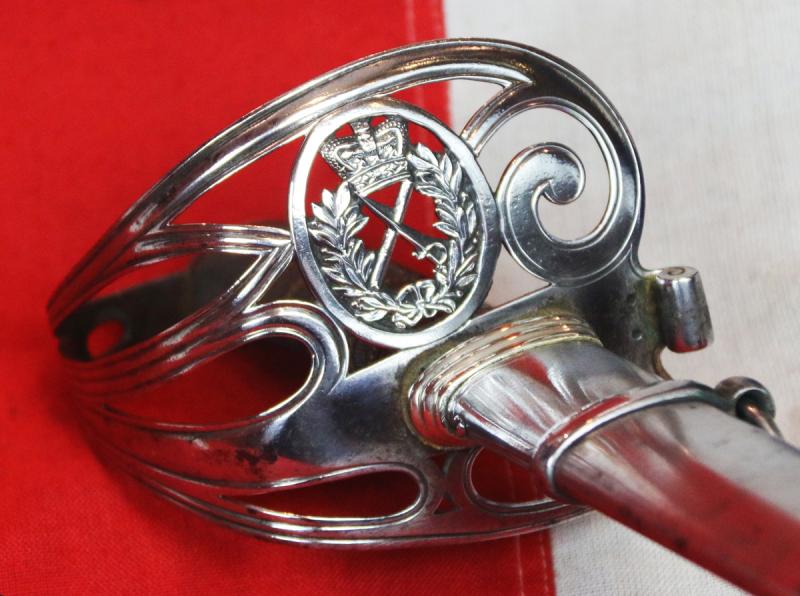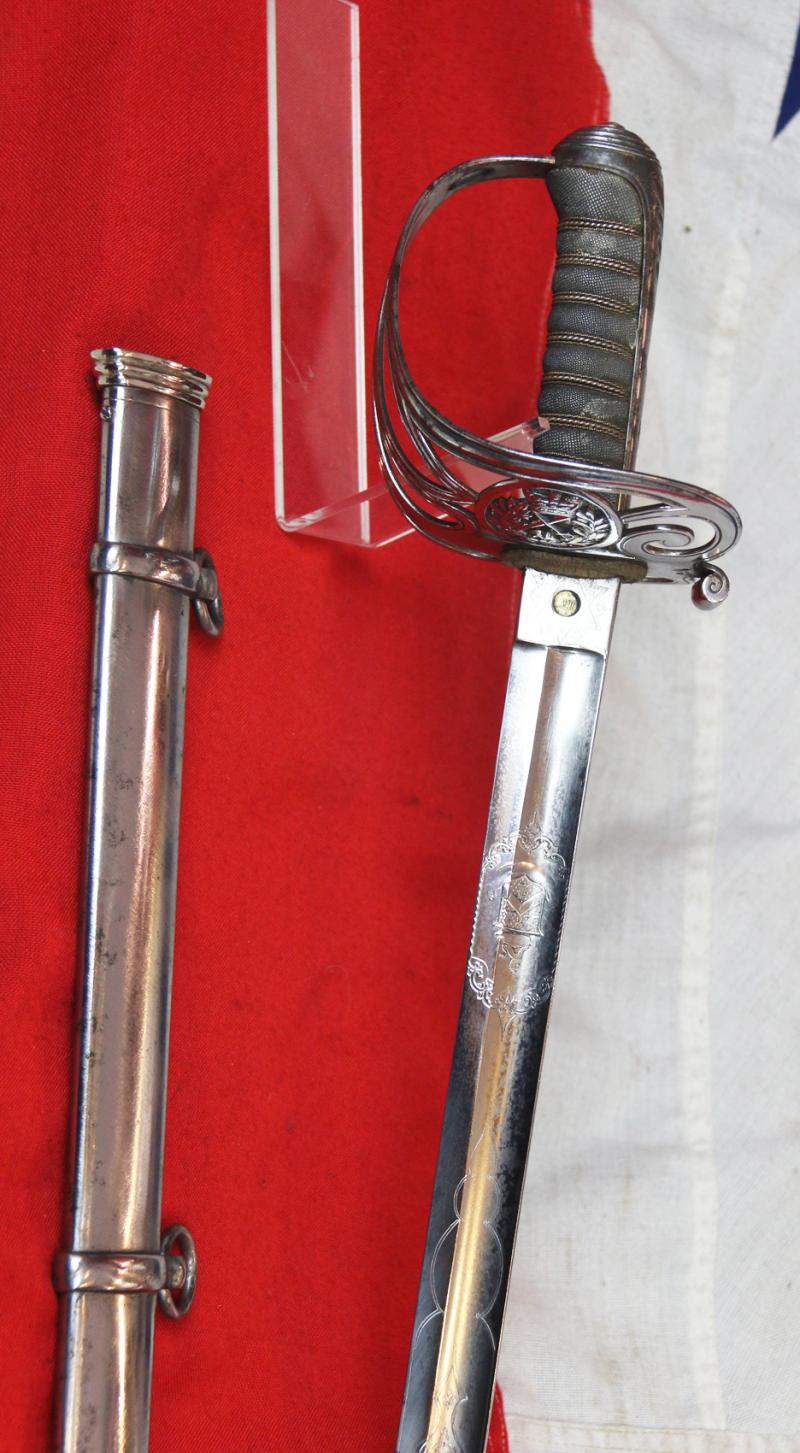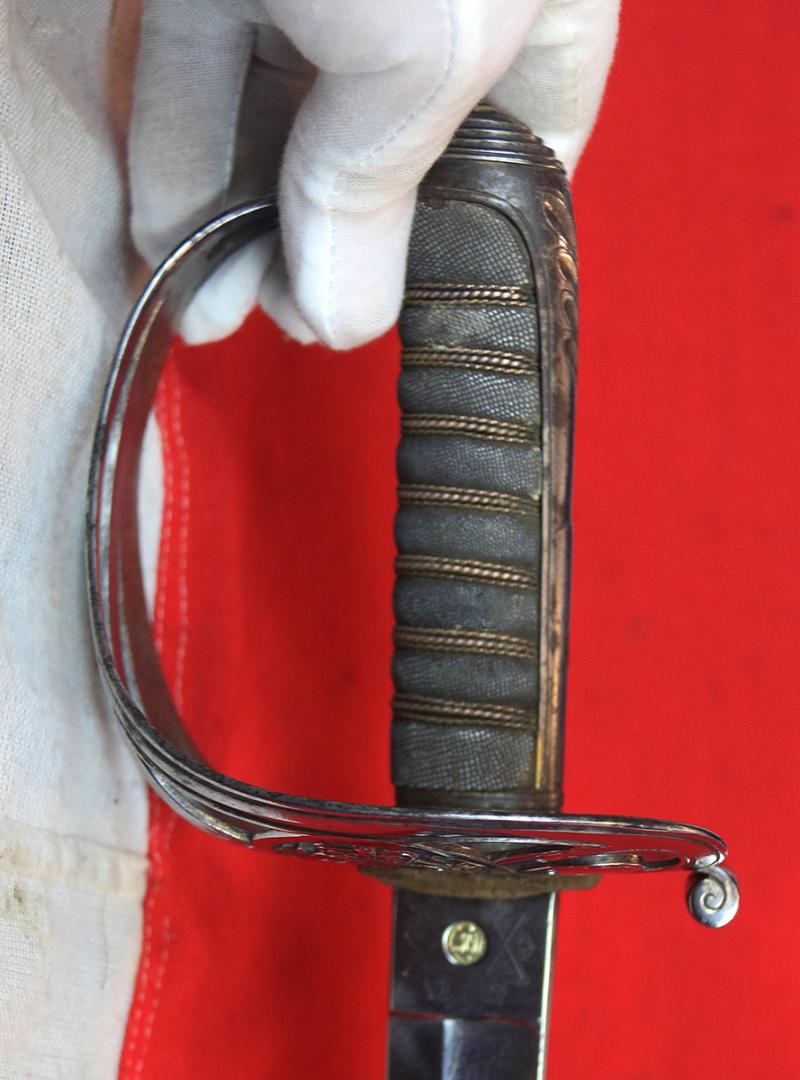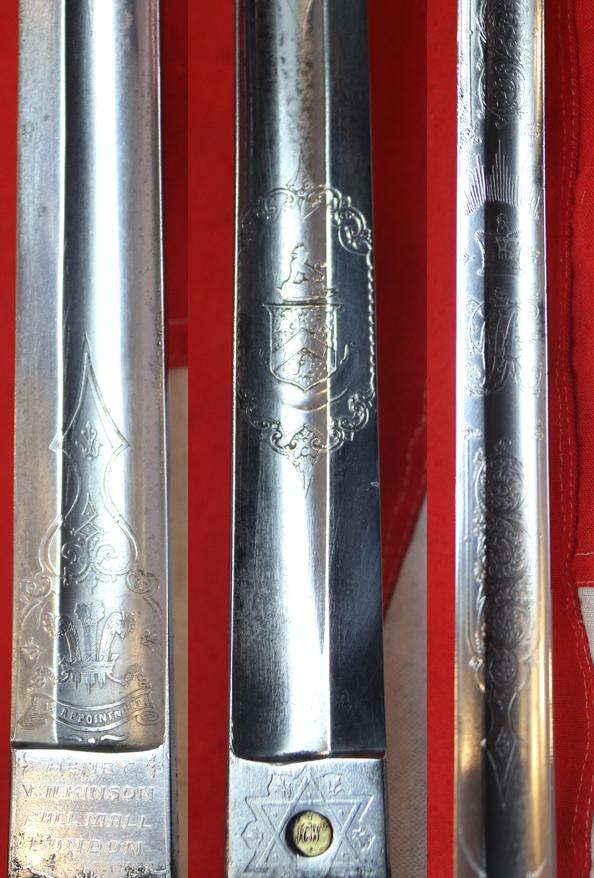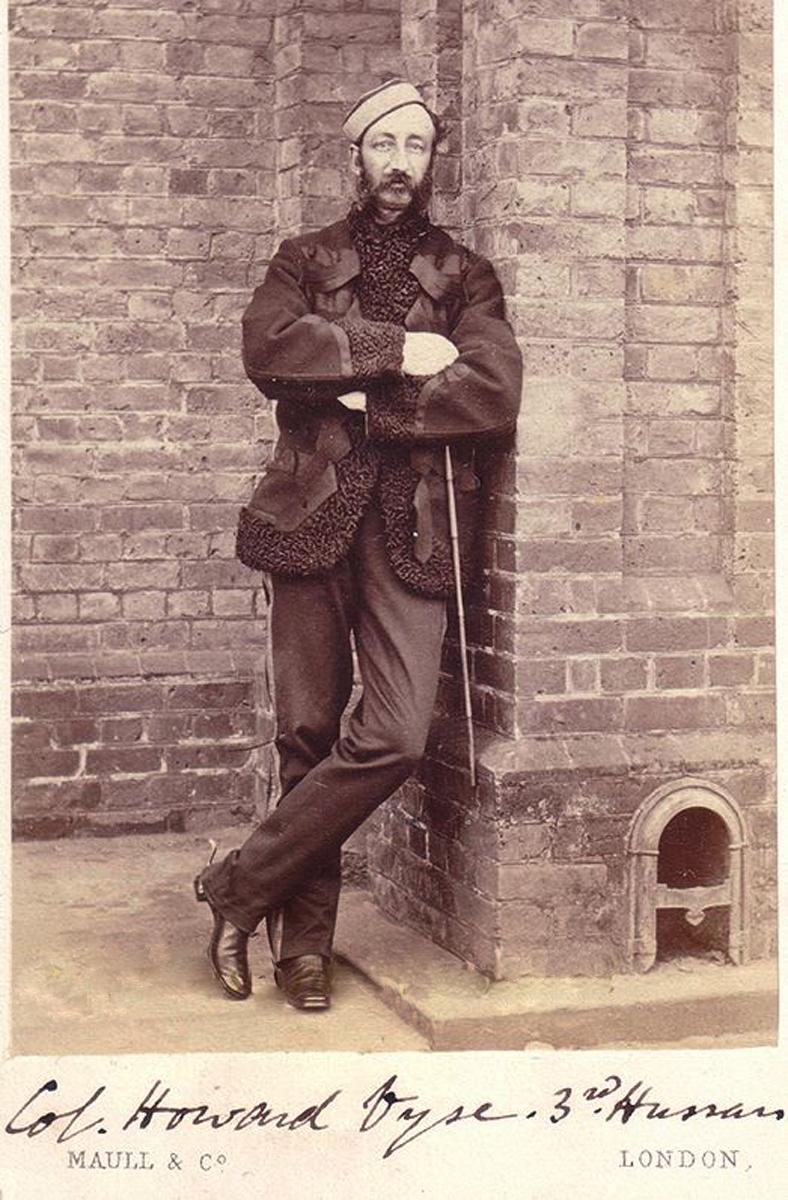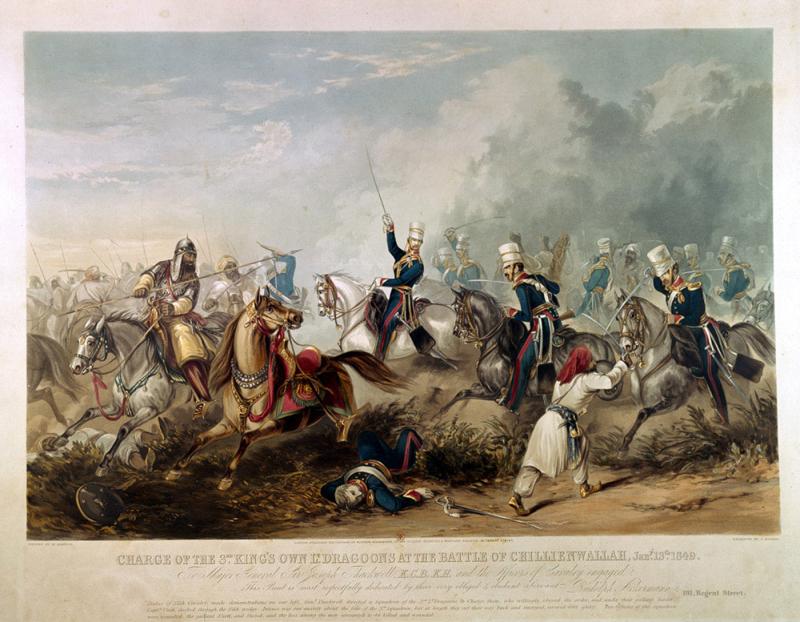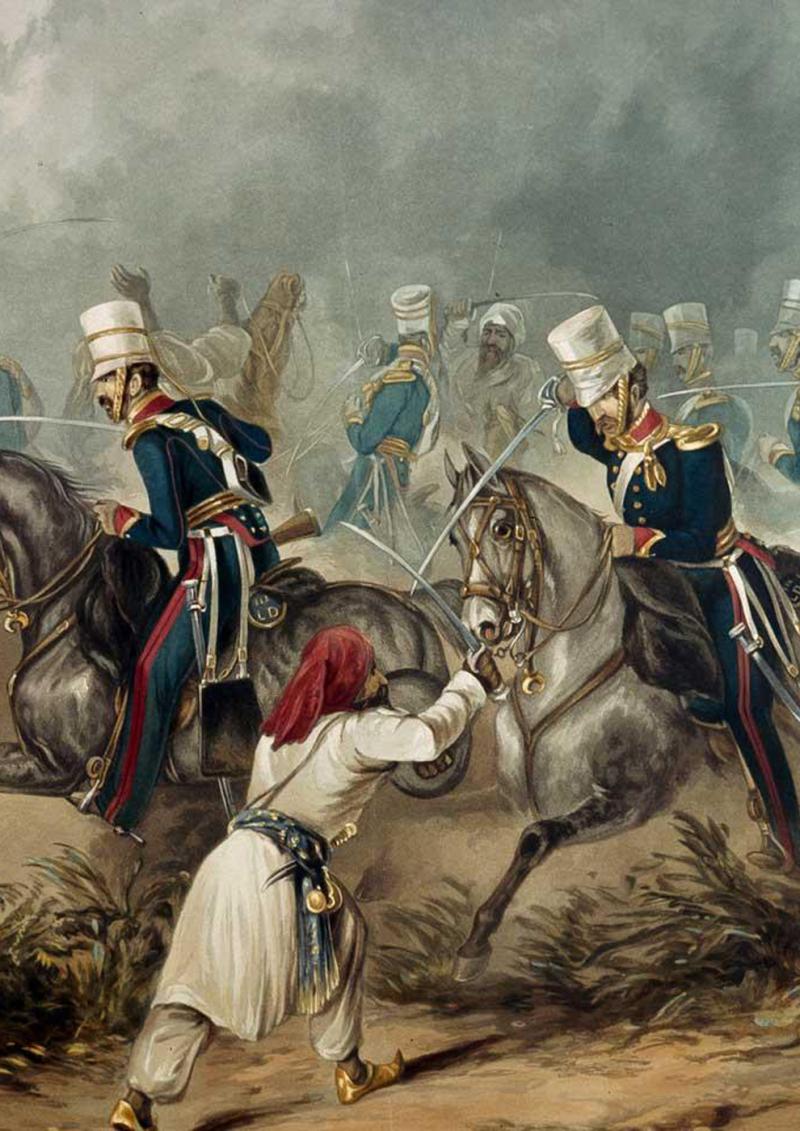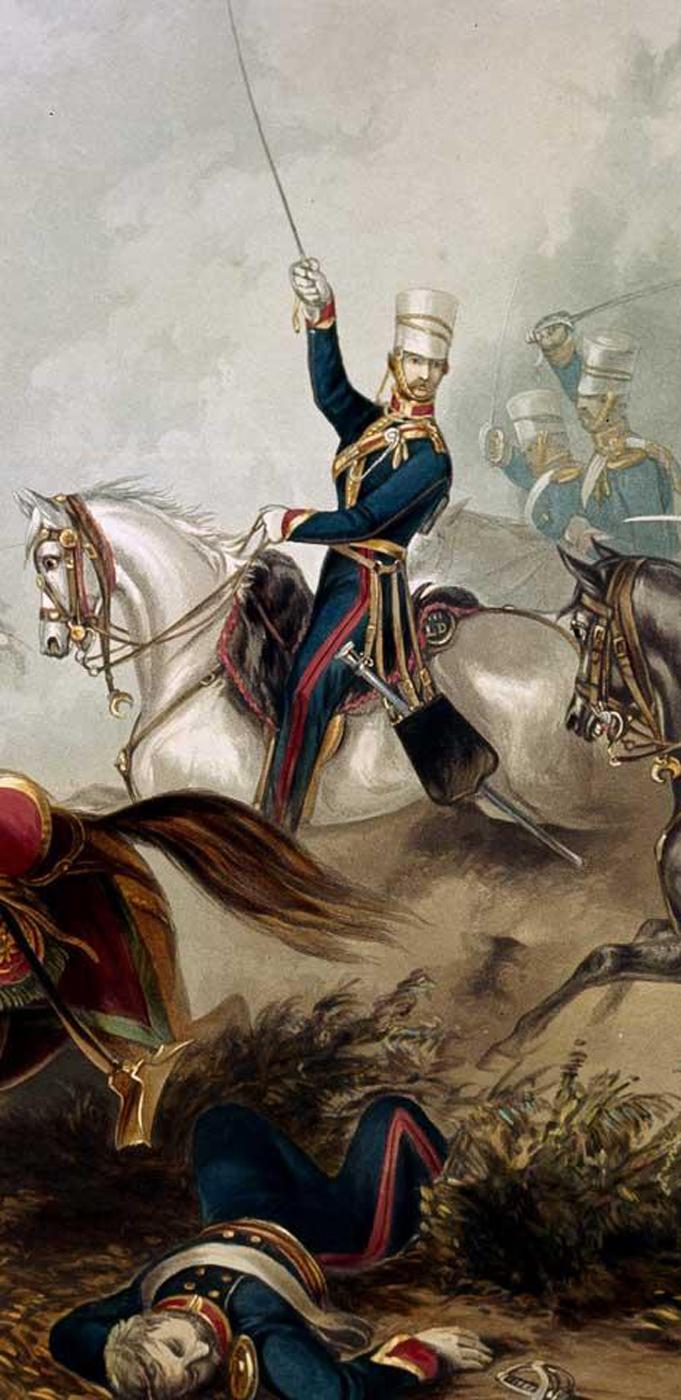An Incredibly Rare Victorian Provenanced Sword, by Wilkinson Sword Co. of General Edward Howard-Vyse, Brigadier General, Commander of Sindh, in the Indian Raj, Colonel of the 3rd Hussars. Likely Unique With None Other Like It Ever Made.
This fabulous combat sword, with steel mounted combat scabbard, is in superb condition. It bears his noble crest of General Howard-Vyse, and the Wilkinson maker etched panel, and its 1868 serial number. This is the very first steel, Gothic hilt style General’s sword, of the undress cavalry combat sword form, we have ever seen, certainly in the past 50 years, and possibly for 100 years. This bespoke Victorian Wilkinson sword, specifically made for the general, may very likely be the only example of its type ever made.
General Edward Howard-Vyse was also born in a highly illustrious military family, a great-grandson of Field Marshall Sir George Howard, a grandson of General Richard Vyse and son of Major General Richard William Howard-Vyse - a soldier and an Egyptologist, whose military background famously showed when he made his way into the Great Pyramid of Giza in 1837 - opening it using dynamite and gunpowder !. His son was a General and his grandson, also named Edward, rode in the Berlin Olympics in 1936, and also became a general of the British Army.
One might conclude there were almost as many generals in the Howard-Vyse family, as the royal family
Edward Howard-Vyse Colonel the 3rd King's Own Hussars :
He purchased his commission as a Cornet on 21 august 1849. He'll purchased the commissions of Lieutenant on 3 february 1854, Captain on 17 February 1857, Major on 10 June 1862 and Lieutenant Colonel on 18 October 1864. He was promoted to Colonel on 18 October 1869 (while still being Lieutenant Colonel of the 3rd Hussars).
The 1875 Army Lists teaches us that he combines his regimental command with the post of "Brigadier General commanding Sindh, Bombay". The 3rd Hussars were in Mhow, then - a famously unhealthy station.
On 23 April 1880, he was promoted to Major General - "on unattached pay" (being 1£ 5s per diem).
On 23 September 1891, he was still Colonel of his 3rd Hussars. And an "Honorary Lieutenant General" He kept this Colonelcy until his death on 26 January 1901.
The Wilkinson sword records show he purchased it in 1868, and when he was made General of Scindh, while Colonel of the 3rd Hussars, his sword hilt was adapted to bear the General Officers Gothic hilt {with crossed field marshal's baton and sword} but, very very rarely, it is the steel gothic hilted cavalry version. Every one we have ever seen before was gilt brass hilted, or, had a plain 3 bar guard in steel
The regiment was renamed the 3rd (The King's Own) Regiment of (Light) Dragoons in 1818.
1837 saw the regiment on its first Indian deployment, which lasted 16 years. There, it took part in the First Afghan War (1839-42) and the First and Second Sikh Wars (1845-49), including the battles of Kabul, Moodkee, Ferozeshah, Sobraon, Chillianwala and Goojerat.
The generals great grandfather, Field Marshal Sir George Howard was commissioned into his father's regiment (later the 24th Regiment of Foot) in 1725. He commanded the 3rd Regiment of Foot at the Battle of Fontenoy during the War of the Austrian Succession.
He fought at the Battle of Falkirk and the Battle of Culloden during the Jacobite Rebellion and was accused of treating the defeated highlanders harshly.
He also took part in the Raid on Rochefort in 1757 and commanded a brigade at the Battle of Warburg in 1760 during the Seven Years' War.
The remarkable history of Sindh in India, from the late 1500's, up to the Victorian Raj period.
In the late 16th century, Sindh was brought into the Mughal Empire by Akbar, himself born in the Rajputana kingdom in Umerkot in Sindh. Mughal rule from their provincial capital of Thatta was to last in lower Sindh until the early 18th century, while upper Sindh was ruled by the indigenous Kalhora dynasty holding power, consolidating their rule from their capital of Khudabad, before shifting to Hyderabad from 1768 onwards.
The Talpurs succeeded the Kalhoras and four branches of the dynasty were established.83 One ruled lower Sindh from the city of Hyderabad, another ruled over upper Sindh from the city of Khairpur, a third ruled around the eastern city of Mirpur Khas, and a fourth was based in Tando Muhammad Khan. They were ethnically Baloch, and for most of their rule, they were subordinate to the Durrani Empire and were forced to pay tribute to them.
They ruled from 1783, until 1843, when they were in turn defeated by the British at the Battle of Miani and Battle of Dubbo. The northern Khairpur branch of the Talpur dynasty, however, continued to maintain a degree of sovereignty during British rule as the princely state of Khairpur.
The British conquered Sindh in 1843. General Charles Napier is said to have reported victory to the Governor General with a one-word telegram, namely "Peccavi" – or "I have sinned" (Latin).
Sometime after this Colonel Howard-Vyse of the 3rd Hussars, was appointed General, in Command of Sindh, covering an area of approx. 54,000 square miles
Pictures in the gallery are one of Col. Howard-Vyse with his signature, rank and regiment {for information only} plus 3 pictures from a painting of the 3rd Hussars at the Battle of Chillienwalah
Code: 24814
1750.00 GBP



